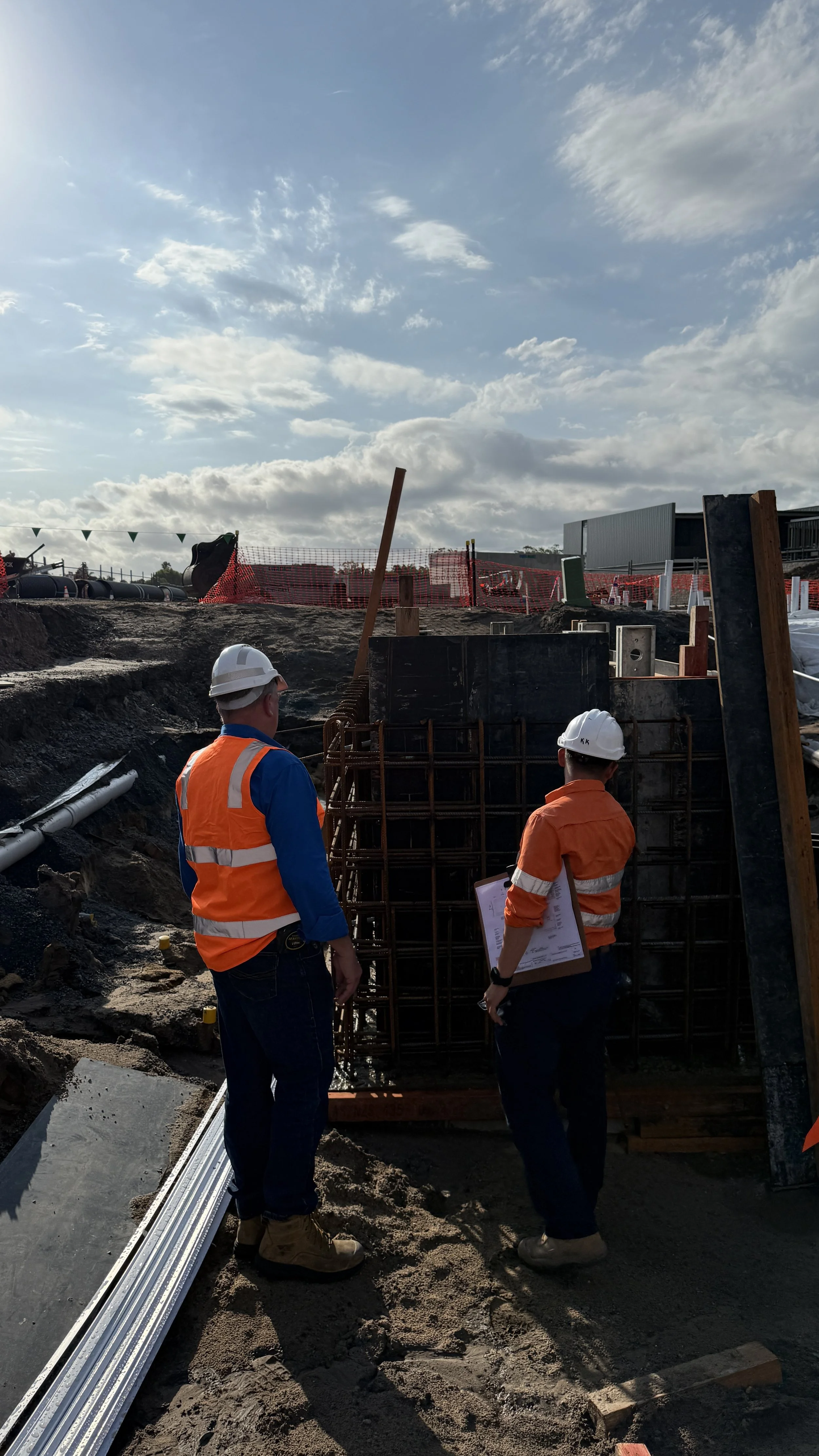FREQUENTLY ASKED QUESTIONS & COMMON TERMS
Got questions? Good. We like clients who think ahead.
Whether you're a first-time property developer, seasoned builder, or navigating council requirements for the first time, engineering can feel complex. We're here to simplify it.
Make it make sense
At JC Engineers, we cut through the jargon, help you understand what actually matters, and guide you from concept to completion without the costly surprises. From structural design and compliance to site inspections and value engineering, we’ve answered the questions we hear most (even the ones you were too afraid to ask).
Here’s what our clients really want to know and how we help them build smarter, safer, and with less stress.
-
Spoiler: If you're asking this, you probably do. We don’t just sign off plans, we help prevent six-figure mistakes.
-
They can, and that’s when we usually get called in to fix it. Engineering is cheaper when it's proactive, not reactive.
-
Not with us. We guide first-time developers through the maze and help you avoid the common traps.
-
We price fairly for value. We’re not the cheapest, we’re the most cost-effective in the long run.
-
Think delays, fines, legal issues, or a failed structure. But hey, you’ll definitely get a story out of it.
-
Nope. If it’s not safe, compliant, or structurally sound, it’s a no from us. You don’t want your name on that either.
-
We’re fast, but not cowboys. If we can’t do it right, we won’t do it rushed. Quality first, always.
-
Absolutely. And if they reject your submission, it’ll cost you weeks. We help you avoid that.
-
Yes. We work with everyone from mum-and-dad renovators to national asset managers.
-
We speak human. We know our numbers, but we also know how to guide, simplify, and deliver real value.
-
Specific, measurable standards in a planning scheme code (e.g., Dwelling House Code) that, if met, ensure compliance without further assessment. For example, an AO might specify a maximum building height of 9.5 m in Brisbane’s Low-Density Residential Zone.
-
→A broad category of coarse to medium-grained particulate material used in construction, including sand, gravel, crushed stone, and slag.
-
The maximum load per unit area that the soil or rock can support without yielding or excessive settlement.
-
A digital representation of physical and functional characteristics of a facility, forming a reliable basis for decisions during its lifecycle from inception onward.
-
The use of computer systems for creating, modifying, analysing, or optimising a design.
-
A penetration test for evaluating the strength of subgrade soil for roads and pavements.
-
A streamlined approval process for development applications that comply with a planning scheme’s codes. It doesn’t require public notification, making it faster than impact assessment. Brisbane’s RiskSMART process is an example for code-assessable projects.
-
The process of increasing the density of a soil or aggregate by reducing the air voids through mechanical means.
-
A structure that allows water to flow under a road, railroad, or other embankment.
-
A formal request submitted to a local council to approve a proposed development, such as a subdivision or commercial building. DAs must include plans, reports, and compliance details, assessed against the local planning scheme.
-
The static load acting on a structure due to its own weight and the weight of permanent, fixed components.
-
A raised structure, typically made of earth or rock, used to support a roadway or other construction.
-
A planning scheme layer identifying flood-prone areas, requiring developments to meet specific standards, like elevated floor levels (e.g., 1% Annual Exceedance Probability + 0.3 m freeboard in Logan). Common in SEQ due to flood risks.
-
The branch of civil engineering concerned with the engineering behavior of earth materials.
-
A detailed approval process for developments with potential significant impacts, requiring public notification and broader assessment against the planning scheme. Often applies to large-scale projects in Centre Zones.
-
Fees levied by councils to fund trunk infrastructure (e.g., roads, water networks) needed for new developments. SEQ councils update these via Local Government Infrastructure Plans (LGIPs), like Brisbane’s 2025 charges schedule.
-
The dynamic load acting on a structure due to occupancy, movable equipment, and other temporary forces.
-
A council’s long-term plan for delivering infrastructure to support growth, outlining projects and charges.
-
Civil works required to support development, such as earthworks, drainage, roads, or sewerage. In SEQ, these require separate council approval, often following a DA, and must comply with Stormwater Management PSP.
-
A planning scheme layer imposing additional requirements on a site, such as Environmental Significance (protecting koala habitats) or Coastal Hazard (addressing sea-level rise). Overlays take precedence over zoning rules.
-
The durable surface material laid down on an area intended to sustain vehicular or foot traffic.
-
A legal document outlining a council’s land use and development rules, including zones, codes, and overlays. Examples include Moreton Bay Planning Scheme 2025 and Gold Coast City Plan 2016.
-
Item description
-
Concrete containing reinforcement, such as steel bars or mesh, to increase its tensile strength.
-
Queensland’s regional plan for SEQ, guiding land use, housing, and infrastructure to accommodate 5.3 million residents by 2046. It prioritizes transit-oriented development (TOD) and sustainable growth.
-
The internal resistance of a material to shear stress, which is a force that causes layers of the material to slide past each other.
-
The natural soil prepared and compacted to support a pavement or other structure.
-
The supporting structure below the superstructure, such as foundations, piers, and abutments.
-
A previous version of a planning scheme that developers can request to apply to their project if it’s more favorable than the current scheme. Councils may grant this for transitional projects.
-
The portion of a bridge or building that is above the substructure.
-
High-density, mixed-use development near public transport hubs, promoting walkability and sustainability. SEQ’s TODs, like Woolloongabba in Brisbane, align with ShapingSEQ 2023’s housing goals.
-
The stress at which a material begins to deform plastically, or permanently.
-
The upper level of an underground surface in which the soil is saturated with groundwater.
-
A planning scheme category defining permissible land uses, such as Low-Density Residential, Centre, or Rural. Zones set rules for development types and densities, e.g., High-Density Residential in Gold Coast’s Southport.


